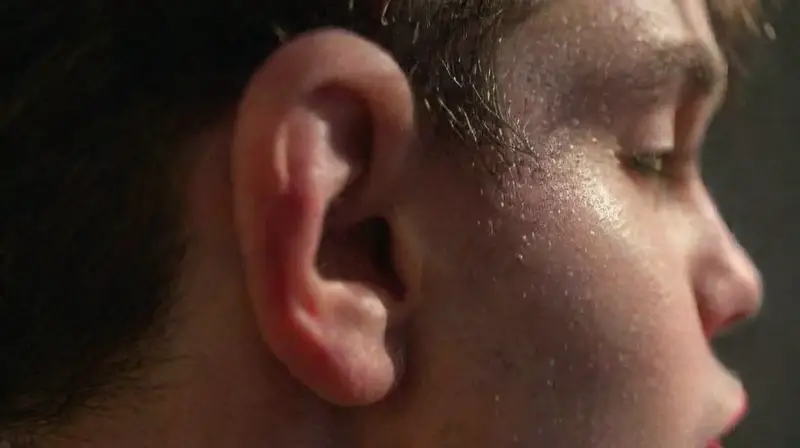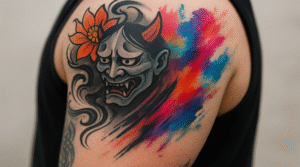Abstract piercings are a modern form of body art that blend creativity with unconventional design. These piercings often explore texture to create visually striking effects, moving away from traditional symmetrical styles. Artists incorporate various materials and techniques to emphasize the tactile qualities of their work, making each piece a unique experience for the viewer and wearer.
The focus on textural diversity allows for a deeper exploration of form and space within the body. Through contrasting surfaces, such as smooth versus rough or matte versus shiny, artists craft compositions that challenge perceptions. This innovative approach transforms body modification into a dynamic canvas of artistic expression.
The Role of Material in Textural Contrast
Material choice plays a crucial role in enhancing textural contrasts in abstract piercings. Metals like titanium, gold, and stainless steel provide different finishes and tactile qualities that influence the overall aesthetic. A matte surface can create a muted, understated look, while polished elements produce a reflective, eye-catching shine.
In addition to metals, artists often incorporate unconventional materials such as silicone, leather, or even acrylics. These elements introduce varied textures that can evoke different sensory responses. Combining diverse materials allows for greater flexibility and creativity in designing eye-catching, multidimensional pieces.
The interplay of different materials enhances the depth of a piercing’s visual effect. Contrast between a smooth, glossy surface and a rough, textured component can symbolize duality or tension within the design. This deliberate material juxtaposition enriches the symbolic and aesthetic value of abstract piercings.
Techniques for Achieving Textural Variety
Artists employ a range of techniques to create contrasting textures in their designs. Surface treatments such as etching, engraving, or sandblasting add tactile layers and visual complexity. These methods can produce intricate patterns that invite closer inspection.
Combining different techniques within a single piece allows for seamless integration of varied textures. For example, a smooth, polished segment may border a rough, matte section, emphasizing their differences. This approach highlights the organic, flowing nature of abstract designs.
Furthermore, the use of 3D modeling and sculpting software enables artists to plan precise textural effects before execution. Digital tools help visualize how different surface qualities will interact on the body, resulting in more cohesive and impactful piercings.
Artistic Influences and Inspirations

Many artists draw inspiration for textural contrasts from the natural world. The rugged appearance of tree bark, the smoothness of water surfaces, or the layered complexity of geological formations inform their designs. These natural elements provide a rich palette for creating abstract, textured body modifications.
Additionally, abstract art movements such as Cubism and Constructivism influence how artists think about form and texture. They challenge traditional notions of beauty and symmetry, opting instead for dynamic, multifaceted compositions that emphasize tactile richness.
Cultural motifs and historical craftsmanship also inspire textural experimentation. Techniques from different eras and regions—embossing, chiseled stone, woven textiles—are reinterpreted in modern piercing art. This blending of influences results in innovative, textured designs that resonate with diverse audiences.
The Psychological Impact of Textural Contrast
The use of contrasting textures in piercings can evoke powerful emotional responses. Visually, they draw viewers’ attention through unexpected juxtapositions and tactile surprises. Such designs often elicit curiosity and engagement, making the wearer a focal point.
From a psychological perspective, textural variability can symbolize complex personal narratives or inner conflicts. Rough elements might represent resilience or chaos, while smooth surfaces suggest calm or clarity. These symbolic contrasts allow wearers to express multifaceted aspects of their identity.
Moreover, textured piercings encourage a heightened sensory awareness. The physical tactility invites touch and interaction, fostering a deeper connection between the body art and its audience. This interplay between sight and sensation enhances the overall experience of the artwork.
Challenges in Creating Textural Contrasts

Achieving desired textural effects in abstract piercings requires skill, precision, and a deep understanding of materials. Artists must carefully balance durability with aesthetic appeal, ensuring that textured surfaces withstand daily wear. This often involves meticulous planning and craftsmanship.
Surface irregularities may pose practical challenges, such as cleaning and maintenance. Textured areas can trap dirt or bacteria, so designers must consider hygiene alongside visual impact. Regular upkeep is essential to preserve both the appearance and safety of the piercing.
Finally, client preferences and anatomical considerations influence the feasibility of complex textural contrasts. Not all designs are suitable for every body type or location. Collaborating closely with clients ensures that the artistic vision aligns with practicality and comfort.
The Future of Textural Innovation in Piercings
As technology advances, so do the possibilities for creating intricate textural contrasts in body art. Innovations in 3D printing and surface treatment allow for highly detailed and customized designs that were previously impossible. These tools expand the creative scope for artists exploring abstract forms.
Emerging materials, such as bio-compatible composites and smart polymers, offer new textures and functionalities. These innovations could enable interactive piercings that change appearance or texture over time, opening exciting avenues for artistic expression.
The integration of digital design with traditional fabrication techniques promises a new era of textural innovation. Artists will be able to prototype complex contrasts with greater precision, pushing the boundaries of abstract piercing art. This ongoing evolution will likely lead to even more dynamic and captivating body modifications.
Conclusion
Textural contrasts in abstract piercings offer a compelling exploration of form, material, and symbolism. They challenge conventional aesthetics while providing a rich sensory experience for both artists and viewers. By embracing diverse textures, creators craft pieces that are as visually engaging as they are meaningful.
Ultimately, these designs exemplify how body modification can serve as a living canvas for artistic experimentation. The innovative use of texture not only enhances the visual impact but also deepens the personal and cultural significance of each piece. As the field evolves, the possibilities for textured abstraction in piercings are bound to expand, inspiring new expressions of identity and creativity.





